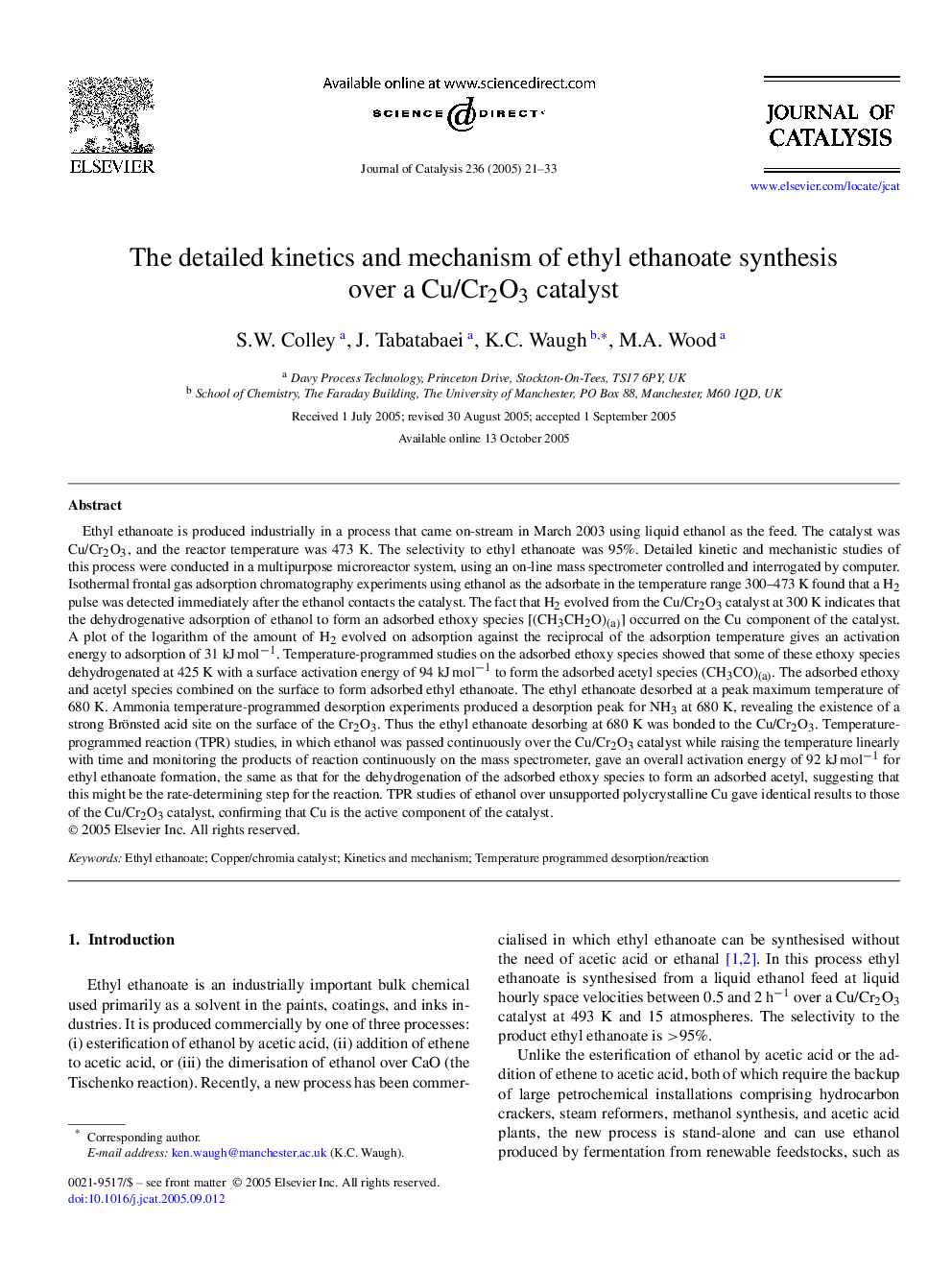| کد مقاله | کد نشریه | سال انتشار | مقاله انگلیسی | نسخه تمام متن |
|---|---|---|---|---|
| 10244431 | 47685 | 2005 | 13 صفحه PDF | دانلود رایگان |
عنوان انگلیسی مقاله ISI
The detailed kinetics and mechanism of ethyl ethanoate synthesis over a Cu/Cr2O3 catalyst
دانلود مقاله + سفارش ترجمه
دانلود مقاله ISI انگلیسی
رایگان برای ایرانیان
کلمات کلیدی
موضوعات مرتبط
مهندسی و علوم پایه
مهندسی شیمی
کاتالیزور
پیش نمایش صفحه اول مقاله

چکیده انگلیسی
Ethyl ethanoate is produced industrially in a process that came on-stream in March 2003 using liquid ethanol as the feed. The catalyst was Cu/Cr2O3, and the reactor temperature was 473 K. The selectivity to ethyl ethanoate was 95%. Detailed kinetic and mechanistic studies of this process were conducted in a multipurpose microreactor system, using an on-line mass spectrometer controlled and interrogated by computer. Isothermal frontal gas adsorption chromatography experiments using ethanol as the adsorbate in the temperature range 300-473 K found that a H2 pulse was detected immediately after the ethanol contacts the catalyst. The fact that H2 evolved from the Cu/Cr2O3 catalyst at 300 K indicates that the dehydrogenative adsorption of ethanol to form an adsorbed ethoxy species [(CH3CH2O)(a)] occurred on the Cu component of the catalyst. A plot of the logarithm of the amount of H2 evolved on adsorption against the reciprocal of the adsorption temperature gives an activation energy to adsorption of 31 kJâmolâ1. Temperature-programmed studies on the adsorbed ethoxy species showed that some of these ethoxy species dehydrogenated at 425 K with a surface activation energy of 94 kJâmolâ1 to form the adsorbed acetyl species (CH3CO)(a). The adsorbed ethoxy and acetyl species combined on the surface to form adsorbed ethyl ethanoate. The ethyl ethanoate desorbed at a peak maximum temperature of 680 K. Ammonia temperature-programmed desorption experiments produced a desorption peak for NH3 at 680 K, revealing the existence of a strong Brönsted acid site on the surface of the Cr2O3. Thus the ethyl ethanoate desorbing at 680 K was bonded to the Cu/Cr2O3. Temperature-programmed reaction (TPR) studies, in which ethanol was passed continuously over the Cu/Cr2O3 catalyst while raising the temperature linearly with time and monitoring the products of reaction continuously on the mass spectrometer, gave an overall activation energy of 92 kJâmolâ1 for ethyl ethanoate formation, the same as that for the dehydrogenation of the adsorbed ethoxy species to form an adsorbed acetyl, suggesting that this might be the rate-determining step for the reaction. TPR studies of ethanol over unsupported polycrystalline Cu gave identical results to those of the Cu/Cr2O3 catalyst, confirming that Cu is the active component of the catalyst.
ناشر
Database: Elsevier - ScienceDirect (ساینس دایرکت)
Journal: Journal of Catalysis - Volume 236, Issue 1, 15 November 2005, Pages 21-33
Journal: Journal of Catalysis - Volume 236, Issue 1, 15 November 2005, Pages 21-33
نویسندگان
S.W. Colley, J. Tabatabaei, K.C. Waugh, M.A. Wood,